Home> Technical Articles> Enhancing Performance with Four Point Contact Ball Bearings in Europe
- AddressNo.1875 East Changjiang Road, New District, Wuxi, Jiangsu,China
- Factory AddressNo.1875 East Changjiang Road, New District, Wuxi, Jiangsu, China
- Worktime9:00-18:00
- Phone(Working Time)86-510-85310167
In the ever-evolving landscape of European industries, precision engineering plays a pivotal role in achieving efficiency and reliability. At the heart of precision engineering are specialized components like four point contact ball bearings. This article serves as a guide to understanding the significance of these precision bearings in European industries, providing an overview of four point contact ball bearings, and outlining the structure and scope of this informative piece.
Understanding Four Point Contact Ball Bearings
Four point contact ball bearings, often referred to as QJ bearings, are a type of angular contact ball bearing designed to handle both radial and axial loads simultaneously. Their unique four-point contact design allows them to achieve high precision and load-carrying capacity, making them indispensable in various European industrial applications. In this section, we will delve deeper into what four point contact ball bearings are, their distinctive design features, and how they function. Furthermore, we will explore their critical role in precision engineering within European industries.

Understanding Four Point Contact Ball Bearings
Four point contact ball bearings, commonly known as QJ bearings, are a specialized type of angular contact ball bearings renowned for their versatility and precision. In this section, we will provide a comprehensive understanding of these remarkable components, focusing on their unique design features and how they function. Additionally, we'll explore the pivotal role played by four point contact ball bearings in the landscape of precision engineering within European industrial applications.
What are Four Point Contact Ball Bearings?
Four point contact ball bearings are a class of precision bearings specifically engineered to manage both radial and axial loads simultaneously. They derive their name from the four points of contact they establish with the inner and outer ring raceways. This design allows them to distribute loads evenly across the balls, resulting in enhanced load-carrying capacity and exceptional rotational precision. Four point contact ball bearings are favored for their ability to accommodate complex loads and maintain stability, making them essential in various European industries where precision is paramount.
Unique Design Features
One of the key attributes that set four point contact ball bearings apart is their unique design. Unlike standard angular contact ball bearings, which typically have two points of contact, these bearings have four contact points. This innovative configuration provides several advantages:
|
Axial Load Capacity |
Four point contact ball bearings excel at handling axial loads in both directions. This capability is particularly valuable in applications where thrust loads are prevalent. |
|
Radial Load Capacity |
These bearings can also accommodate radial loads, making them versatile components suitable for a wide range of applications. |
|
High Precision |
The four-point contact design ensures that the bearing maintains consistent contact angles, resulting in precise and stable rotation. |
|
Reduced Friction |
With fewer contact points, there is reduced friction, leading to lower operating temperatures and improved energy efficiency. |
Importance of Precision Engineering
Precision engineering is the backbone of European industrial sectors such as aerospace, robotics, and manufacturing. Four point contact ball bearings play a pivotal role in ensuring the precision required in these industries. Their ability to handle complex loads while maintaining accurate rotational movement is instrumental in enhancing performance, reliability, and efficiency. European manufacturers and engineers rely on these bearings to achieve precision in their machinery and equipment, ultimately driving progress and innovation in their respective fields.
As we delve further into this article, we will explore the specific advantages and benefits that four point contact ball bearings bring to European industries, shedding light on their significant contributions to performance enhancement and reliability.
Advantages and Benefits
In the world of precision engineering within European industries, where performance and reliability are of utmost importance, four point contact ball bearings shine as indispensable components. In this section, we will delve into the myriad of advantages and benefits that these specialized bearings offer. We'll explore their significant contributions to machinery performance, their crucial role in enhancing reliability, and conduct a comparative analysis with other bearing types to underscore their superiority.
Advantages of Four Point Contact Ball Bearings
Versatile Load Handling: One of the standout advantages of four point contact ball bearings is their ability to accommodate both radial and axial loads simultaneously. This versatility ensures that they can handle complex loads, making them suitable for a wide range of applications. Whether it's in robotics, aerospace, or heavy machinery, these bearings excel at distributing loads evenly.
Precise Rotational Movement: Precision engineering demands accuracy in motion control, and four point contact ball bearings deliver just that. Their design, with four contact points, ensures consistent contact angles and minimal runout. This results in precise and stable rotational movement, crucial for maintaining the high standards required in European industries.
Reduced Friction and Heat Generation: With fewer contact points compared to traditional angular contact ball bearings, four point contact ball bearings experience reduced friction during operation. This not only contributes to lower energy consumption but also results in lower operating temperatures, which can extend the lifespan of the bearing and the machinery it serves.
Contribution to Machinery Performance and Reliability
Four point contact ball bearings play a pivotal role in enhancing the performance and reliability of machinery across various European industries:
Aerospace Engineering: In the aerospace sector, where precision is non-negotiable, these bearings are utilized in critical applications like landing gear systems and helicopter rotors. Their ability to withstand high axial loads and maintain precise positioning ensures the safety and performance of aircraft.
Robotics and Automation: European industries heavily rely on robotics and automation for increased productivity. Four point contact ball bearings find extensive use in robotic joints and arms, ensuring precise movements and improving the efficiency of manufacturing processes.
Manufacturing and Heavy Machinery: In manufacturing and heavy machinery applications, these bearings contribute to the seamless operation of equipment such as machine tools and construction machinery. Their load-carrying capacity and precision support uninterrupted production and reduce downtime.
Comparative Analysis with Other Bearing Types
To truly appreciate the advantages of four point contact ball bearings, it's essential to compare them with other bearing types commonly used in European industries:
Angular Contact Ball Bearings: While angular contact ball bearings are versatile, they typically have only two points of contact. Four point contact ball bearings, with their four-point design, offer greater load-carrying capacity and enhanced stability, especially under axial loads.
Radial Ball Bearings: Radial ball bearings are primarily designed for radial loads, making them less suitable for applications requiring both radial and axial load handling. Four point contact ball bearings bridge this gap with their ability to manage both types of loads effectively.
In conclusion, the advantages and benefits of four point contact ball bearings are abundant and impactful. Their versatility, precision, and reliability make them a preferred choice in European industries where performance standards are exceptionally high. As we continue to explore the significance of these bearings, we will further highlight their applications across different sectors and provide insights into selecting the right bearings for specific needs.
Applications Across European Industries
Four point contact ball bearings have established themselves as indispensable components in various European industries, contributing significantly to precision engineering and industrial efficiency. In this section, we will embark on an exploration of these industries, shedding light on the diverse applications where four point contact ball bearings play a pivotal role.
Automotive Industry
The automotive sector in Europe relies heavily on four point contact ball bearings to achieve the performance standards demanded by modern vehicles. These bearings find their way into numerous critical applications, such as:
|
Steering Systems |
Four point contact ball bearings ensure smooth and precise steering movements in cars, trucks, and commercial vehicles. Their load-carrying capacity and resistance to axial loads make them ideal for this application, contributing to driving safety. |
|
Suspension Systems |
The suspension system of vehicles benefits from the versatility of these bearings, as they efficiently manage both radial and axial loads. This results in enhanced ride comfort and stability. |
|
Transmissions |
Four point contact ball bearings are employed in transmission systems to maintain the precise alignment of gears and components. This not only optimizes power transfer but also reduces wear and tear. |
Aerospace Engineering
The aerospace industry in Europe demands components of the highest precision and reliability, making four point contact ball bearings a natural choice. Their applications in this sector encompass:
Landing Gear Systems: These bearings are integral to landing gear systems, where they endure heavy axial loads during takeoff and landing. Their ability to withstand extreme conditions ensures the safe and reliable operation of aircraft.
Rotorcraft: In helicopters, four point contact ball bearings are crucial for rotor head assemblies, enabling precise rotor movements. This is paramount for the stability and maneuverability of rotary-wing aircraft.
Manufacturing and Heavy Machinery
Manufacturing and heavy machinery industries in Europe benefit greatly from the efficiency enhancements provided by four point contact ball bearings. Specific applications include:
Machine Tools: Four point contact ball bearings are used in the spindles of machine tools, ensuring precision in metalworking, woodworking, and other machining processes. Their capacity to handle radial and axial loads contributes to the accuracy and quality of finished products.
Construction Equipment: Heavy machinery like cranes, excavators, and loaders utilize these bearings in swivel joints, enabling smooth pivoting and positioning. Their robust construction ensures longevity in demanding construction environments.
Renewable Energy Sector
With the growing focus on renewable energy sources, four point contact ball bearings are making their mark in wind turbine applications. They are employed in the main shaft and yaw bearing systems, where they facilitate the rotation of turbine blades, optimizing energy production.
Precision Engineering Across Industries
The versatility of four point contact ball bearings extends to a wide range of precision engineering applications, including robotics, medical devices, and instrumentation. Their ability to maintain precise contact angles and minimize runout contributes to the reliability and performance of these systems.
In summary, four point contact ball bearings find applications across various European industries, enhancing precision engineering, and contributing to industrial efficiency. Their ability to handle complex loads, maintain precise movements, and endure harsh conditions makes them integral components in the pursuit of excellence within these sectors. In the following section, we will guide you on the crucial factors to consider when selecting the right four point contact ball bearings for your specific needs, ensuring that you can harness their benefits effectively.

Selecting the Right Bearing
When it comes to enhancing performance with four point contact ball bearings in Europe, one of the most critical aspects is selecting the right bearing for your specific application. These bearings are versatile and highly capable, but making the correct choice ensures optimal performance, reliability, and longevity. In this section, we will delve into the factors that should be considered when selecting four point contact ball bearings in European contexts.
Load Magnitude:
The load-bearing capacity of four point contact ball bearings is a crucial consideration. Understanding the magnitude and direction of the loads your application will exert on the bearing is essential. Whether it's a radial load, axial load, or a combination of both, selecting a bearing with the appropriate load-carrying capacity ensures that it operates within its designed limits, avoiding premature wear and failure.
Speed:
The rotational speed at which the bearing will operate is another vital factor. Bearings are typically rated for their maximum allowable speed. It's essential to ensure that the chosen bearing can handle the RPM (Revolutions Per Minute) of your application without causing excessive heat or friction. High-speed applications may require special lubrication and cooling considerations.
Lubrication:
Proper lubrication is essential for the longevity and performance of four point contact ball bearings. The choice of lubricant and the lubrication method must be compatible with the bearing's design and your specific application. Factors such as temperature, moisture, and contamination levels in your operating environment play a role in selecting the right lubrication strategy.
Environmental Conditions:
Consider the environmental conditions in which the bearing will operate. European industries span a wide range of climates and settings, from clean and controlled environments to harsh and corrosive ones. Bearings for outdoor or marine applications, for example, may require additional corrosion resistance features. Understanding the environmental challenges is essential for bearing selection.
Expert Consultation:
Selecting the right four point contact ball bearings can be a complex task, especially for precision applications in European industries. To ensure the best choice, it's highly advisable to consult experts in the field or reach out to bearing manufacturers. They possess in-depth knowledge and experience to recommend the most suitable bearings based on your specific requirements.
Conclusion
In conclusion, enhancing performance with four point contact ball bearings in Europe hinges on making informed choices during the selection process. Consider load magnitude, rotational speed, lubrication needs, and environmental conditions carefully. When in doubt, seek expert guidance to ensure that you harness the full potential of these precision bearings. In the upcoming section, we will explore future trends and innovations in four point contact ball bearings, shedding light on what the future holds for this critical component in precision engineering.
Future Trends and Innovations
As European industries continue to rely on precision engineering to maintain their competitive edge, the future of four point contact ball bearings holds significant promise. This section delves into the exciting prospects and innovations that are expected to shape the landscape of these bearings in European industries.
Insights into the Future Outlook:
The future of four point contact ball bearings in Europe appears promising, driven by evolving industrial requirements and technological advancements. These bearings have already demonstrated their versatility and reliability in a variety of applications, and this trend is expected to continue. With industries constantly seeking higher levels of precision, efficiency, and reliability, four point contact ball bearings are well-positioned to meet these demands.
Expected Advancements in Materials:
One of the key areas of innovation in four point contact ball bearings lies in the materials used for their construction. Manufacturers are investing in the development of advanced materials that offer enhanced strength, durability, and resistance to environmental factors. These materials may include advanced alloys, ceramics, and coatings, all of which contribute to the bearings' performance and longevity.
Manufacturing Techniques:
In addition to materials, manufacturing techniques are poised to undergo significant advancements. Precision engineering requires manufacturing processes that can produce bearings with tight tolerances and minimal defects. Innovations in manufacturing technologies, such as 3D printing and computer-controlled machining, will enable the production of bearings with even higher precision, ensuring consistent performance across various industries.
Impact on Precision Engineering:
The innovations in four point contact ball bearings are expected to have a profound impact on precision engineering in Europe. As these bearings become more advanced, industries can achieve higher levels of accuracy, reliability, and efficiency in their machinery and equipment. This, in turn, will contribute to the overall competitiveness of European industries on a global scale.
Industrial Applications:
The diverse applications of four point contact ball bearings in European industries are likely to expand further. From aerospace and robotics to medical devices and renewable energy systems, these bearings play a critical role in enhancing performance. As the bearings continue to evolve, new applications and industries may emerge, further underscoring their importance in precision engineering.
Conclusion
In conclusion, the future of four point contact ball bearings in Europe is bright, marked by advancements in materials, manufacturing techniques, and their far-reaching impact on precision engineering. European industries stand to benefit from these innovations as they strive for excellence in performance and reliability. Staying updated with these evolving trends and embracing the latest innovations will be essential for businesses looking to leverage the full potential of four point contact ball bearings.
Conclusion
In this comprehensive exploration of the significance of four point contact ball bearings in European industries, we have uncovered the vital role these precision components play in enhancing performance and reliability. Let's recap the key takeaways and emphasize the importance of staying updated with evolving trends and innovations in the field of precision engineering.
Recap of Significance:
Four point contact ball bearings have emerged as indispensable components in the machinery and equipment used across various European industries. Their unique design features, which allow them to withstand both radial and axial loads simultaneously, make them ideal for applications demanding high precision and reliability. European industries have harnessed the power of these bearings to achieve unmatched performance in their operations.
Leveraging the Benefits:
As European industries strive for excellence in precision engineering, it is imperative that they fully leverage the benefits of four point contact ball bearings. These bearings contribute to the efficiency and reliability of machinery, ultimately enhancing the overall competitiveness of businesses in Europe. It is crucial for industries to recognize the pivotal role these precision components play in their success and invest in their use accordingly.
Staying Updated:
The field of precision engineering is dynamic, with continuous advancements in materials, manufacturing techniques, and applications. To maintain a competitive edge, European industries must stay updated with the latest trends and innovations related to four point contact ball bearings. Being aware of new materials, manufacturing processes, and emerging applications will enable businesses to make informed decisions and adapt to evolving industry demands.
In conclusion, four point contact ball bearings are not just components; they are the driving force behind precision engineering in Europe. Their ability to enhance performance, reliability, and efficiency is invaluable to industries across the continent. As European industries continue to innovate and evolve, it is essential to recognize the role of these bearings and embrace the opportunities they offer. By doing so, businesses can ensure they are at the forefront of precision engineering, delivering the highest standards of quality and performance in their respective fields.
FAQs: Common Questions About Four Point Contact Ball Bearings
What Are Four Point Contact Ball Bearings?
Four point contact ball bearings, also known as QJ bearings, are a specialized type of ball bearing designed to support radial and axial loads simultaneously. They feature four points of contact between the balls and the inner and outer raceways, allowing them to handle both thrust and radial loads effectively. These bearings are commonly used in applications requiring high precision and rigidity.
What Are the Unique Features of Four Point Contact Ball Bearings?
Four point contact ball bearings are distinguished by their ability to carry axial loads in both directions and radial loads, making them highly versatile. Their construction includes an inner ring, outer ring, ball cage, and balls. This design enables them to accommodate complex load conditions while maintaining high rotational speeds.
Where Are Four Point Contact Ball Bearings Used in European Industries?
Four point contact ball bearings find applications across various European industries, including manufacturing, robotics, machine tools, and aerospace. They are particularly useful in situations where space constraints or high axial and radial loads are present. Examples include robotic arms, precision rotary tables, and swiveling machine heads.
How Do Four Point Contact Ball Bearings Enhance Performance?
These bearings enhance performance by providing exceptional stiffness and precision. Their unique design allows for improved load distribution, reduced friction, and increased rigidity. This translates to smoother operation, higher accuracy, and enhanced overall machinery performance in European industries.
Can Four Point Contact Ball Bearings Be Customized for Specific Applications?
Yes, manufacturers often offer customization options for four point contact ball bearings. Depending on the specific requirements of an application, variations in cage design, materials, and lubrication can be tailored to optimize performance and durability.
What Maintenance Practices Should Be Followed for Four Point Contact Ball Bearings?
Proper maintenance is essential to maximize the lifespan of four point contact ball bearings. Regularly inspecting for signs of wear, ensuring proper lubrication, and avoiding overloading are some of the key practices. Manufacturers' guidelines and expert advice should be followed for maintenance procedures.
Where Can European Industries Source High-Quality Four Point Contact Ball Bearings?
European industries can source high-quality four point contact ball bearings from reputable bearing manufacturers and suppliers. It is advisable to work closely with experts in the field to select the right bearing for a specific application and ensure reliable performance.
This FAQ section aims to provide a comprehensive overview of common questions related to four point contact ball bearings. If you have additional inquiries or require further information, it is recommended to consult experts in the field of precision bearings to make informed decisions regarding your specific application needs.


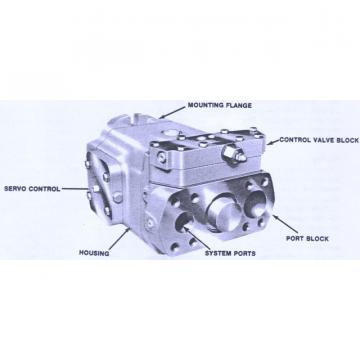 Dansion gold cup piston pump P30P-8L5E-9A4-A00-0B0
Dansion gold cup piston pump P30P-8L5E-9A4-A00-0B0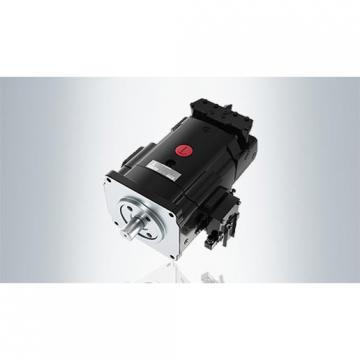 Dansion gold cup piston pump P30P-8L5E-9A2-B00-0C0
Dansion gold cup piston pump P30P-8L5E-9A2-B00-0C0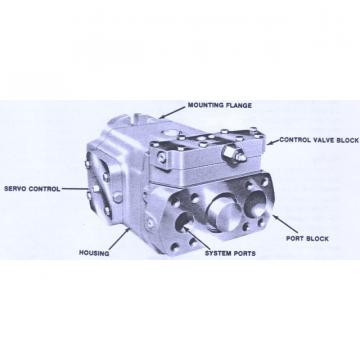 Dansion gold cup piston pump P30L-8L5E-9A7-A0X-B0
Dansion gold cup piston pump P30L-8L5E-9A7-A0X-B0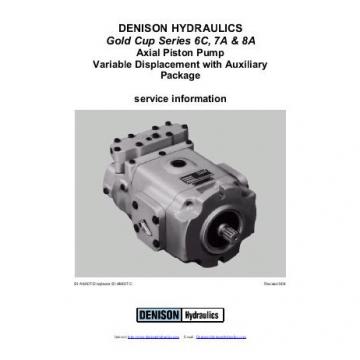 Dansion gold cup piston pump P30P-2R5E-9A7-B00-0C0
Dansion gold cup piston pump P30P-2R5E-9A7-B00-0C0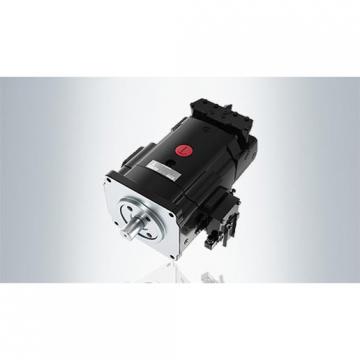 Dansion gold cup piston pump P30L-7R5E-9A2-A0X-D0
Dansion gold cup piston pump P30L-7R5E-9A2-A0X-D0